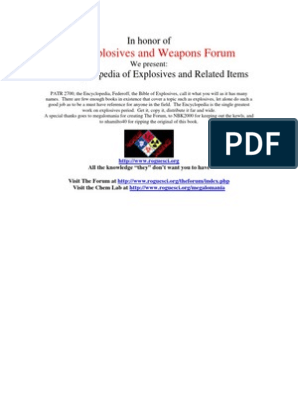0% found this document useful (0 votes)
16 views86 pagesExplosives & Ballistics
The document discusses forensic ballistics and explosives, detailing the fire triangle and the various types of explosives, including primary, low, and high explosives. It covers the properties and synthesis of specific explosives like mercury fulminate, RDX, and TNT, as well as methods for detecting explosives and the anatomy of firearms. Additionally, it explains the mechanics of rifling in firearms and the components of ammunition.
Uploaded by
Sean PaulCopyright
© © All Rights Reserved
We take content rights seriously. If you suspect this is your content, claim it here.
Available Formats
Download as PPTX, PDF, TXT or read online on Scribd
0% found this document useful (0 votes)
16 views86 pagesExplosives & Ballistics
The document discusses forensic ballistics and explosives, detailing the fire triangle and the various types of explosives, including primary, low, and high explosives. It covers the properties and synthesis of specific explosives like mercury fulminate, RDX, and TNT, as well as methods for detecting explosives and the anatomy of firearms. Additionally, it explains the mechanics of rifling in firearms and the components of ammunition.
Uploaded by
Sean PaulCopyright
© © All Rights Reserved
We take content rights seriously. If you suspect this is your content, claim it here.
Available Formats
Download as PPTX, PDF, TXT or read online on Scribd
/ 86





















































































